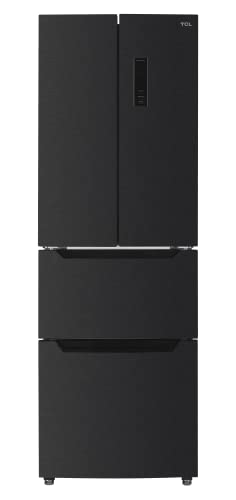Understanding Fridges and Freezers: The Essential Kitchen Appliances
Fridges and freezers are two of the most vital devices in contemporary kitchen areas. These devices serve a vital function in food preservation and waste reduction by making sure that perishable items stay fresh and safe for intake. This short article delves into the numerous kinds of fridges and freezers, their functionalities, and essential factors to consider for selection and upkeep.
Kinds of Refrigerators
The marketplace uses a variety of refrigerator types, each developed to meet different customer requirements. Below is a list of the most common kinds of fridges:
Top-Freezer Refrigerators
- Most typical type.
- Freezer compartment lies above the refrigerator section.
- Normally more inexpensive and energy-efficient.
Bottom-Freezer Refrigerators
- Freezer lies at the bottom.
- Permits much easier access to fresh products at eye level.
- Often includes pull-out drawers for much better company.
Side-by-Side Refrigerators
- Refrigerator and freezer sections are surrounding.
- Suitable for narrow cooking areas and permits easy access to both compartments.
- Often features water and ice dispensers.
French Door Refrigerators
- Combines a bottom freezer with double doors at the top.
- Deals sufficient storage and elegant styles.
- Often includes features like temperature-controlled drawers.
Compact Refrigerators
- Smaller size suitable for minimal areas.
- Commonly used in dormitory, studio apartments, or as secondary fridges.
Table 1: Comparison of Refrigerator Types
| Type | Advantages | Disadvantages | Normal Size |
|---|---|---|---|
| Top-Freezer | Budget friendly, energy-efficient | Less convenient access to the freezer | 14-30 cu. ft. |
| Bottom-Freezer | Easier access to fresh food | Freezer can be harder to organize | 19-30 cu. ft. |
| Side-by-Side | Easy access, water/ice dispenser | Narrow vs. storage area | 22-30 cu. ft. |
| French Door | Elegant, large, arranged | More pricey | 20-30+ cu. ft. |
| Compact | Space-saving, portable | Minimal storage | 1.7-5.5 cu. ft. |
Types of Freezers
Freezers are an equally essential device for food preservation. They can be found in different designs designed to fit various household requirements. Think about the following types:
Upright Freezers
- Operate like a standard refrigerator with vertical storage.
- Much easier to organize with shelves and compartments.
Chest Freezers
- Big, horizontal design generally offering more storage area.
- Maintains temperature levels better throughout power interruptions.
- More energy-efficient than upright models.
Portable Freezers
- Compact systems perfect for outdoor activities or small areas.
- Typically utilized for camping trips or as momentary storage.
Table 2: Comparison of Freezer Types
| Type | Benefits | Drawbacks | Normal Size |
|---|---|---|---|
| Upright Freezer | Simpler to organize | Less energy-efficient, more floor area | 5-20 cu. ft. |
| Chest Freezer | Holds more products, energy-efficient | Harder to organize | 5-25 cu. ft. |
| Portable Freezer | Compact and versatile | Limited storage capacity | 1-10 cu. ft. |
Key Features to Consider
When choosing a fridge or freezer, consumers should bear in mind numerous functions that can boost performance:
- Energy Efficiency: Look for designs with the ENERGY STAR certification to save money on electrical power costs.
- Storage Capacity: Evaluate storage needs based upon household size and eating practices.
- Temperature Control: Some home appliances provide digital controls for exact temperature settings.
- Adjustable Shelving: Customizable shelving enables optimal organization.
- Water and Ice Dispenser: Offers convenience but can take up important area inside.
- Noise Level: Sound rankings can influence comfort, particularly in open-concept homes.
Benefits and drawbacks of Having a Fridge and Freezer
While fridges and freezers are important innovations, they likewise have specific benefits and drawbacks:
| Pros | Cons |
|---|---|
| Preserve food life expectancy and decrease waste | Require regular upkeep |
| Enable bulk purchasing and meal prepping | Can be pricey to buy and run |
| Deal convenience and quick access to food | Occupy considerable kitchen space |
Maintenance Tips
To make sure durability and ideal efficiency of fridges and freezers, think about the following maintenance suggestions:
- Regular Cleaning: Clean the exterior and interior regularly to avoid buildup of dirt and bacteria.
- Inspect Seals: Inspect door seals regularly for leaks to maintain efficiency.
- Temperature Settings: Keep the fridge at 34-38 ° F and the freezer at 0 ° F for ideal food preservation.
- Thaw as Needed: Chest freezers need to be defrosted routinely to preserve effectiveness.
- Clear Air Vents: Ensure that airflow isn't blocked to improve energy efficiency.
FAQs About Fridges and Freezers
Q1: How long can food be saved in a freezer? Cheap Fridge Freezer Sale : Most foods can be kept in a freezer for numerous months. Meats and poultry typically last 4-12 months, while vegetables can last as much as 8-12 months.
Q2: How often should I clean my fridge and freezer?A: It is recommended to clean your fridge and freezer every 3 to 6 months, or as required when spills take place. Q3: Can I put hot food straight in the fridge?A: It is advised to cool hot food to room temperature before putting it in the fridge to prevent
raising the temperature level inside the home appliance. Q4: Why is my fridge running constantly?A: This might be due to a malfunctioning thermostat, clogged coils, or door seals that aren't working effectively. Fridges and freezers are indispensable
possessions to contemporary households, providing vital services for food storage and preservation.
Comprehending the different types, functions, and upkeep requirements can help customers choose the best appliances for their needs and maximize their performance. Welcoming energy-efficient designs not just supports sustainable practices however likewise contributes to significant savings on utility costs, making informed choices more essential than ever.

